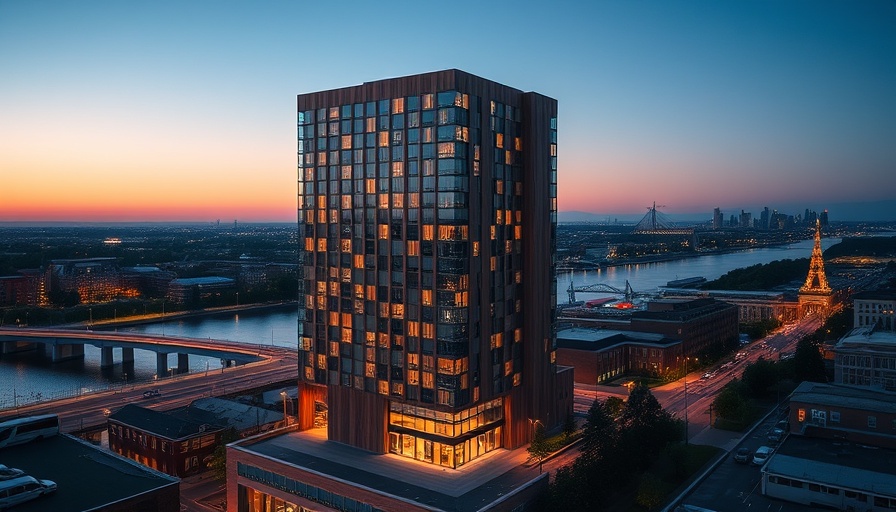
Milwaukee Makes History with Neutral Edison
The skyline of Milwaukee is set to redefine itself as construction begins on Neutral Edison, a remarkable 31-story mixed-use tower that will earn the title of the world’s tallest mass timber building upon completion. In a significant step toward sustainable urban development, the structure promises to bring a blend of residential and commercial life to the heart of the city, offering 350 apartments alongside innovative retail spaces.
A Sustainable Approach to Urban Living
Neutral Edison is not just another high-rise; it is a testament to the evolution of building materials and sustainable practices in the construction industry. With mass timber gaining popularity for its environmental benefits, the choice to use this material highlights a commitment to reducing carbon footprints while enhancing aesthetic appeal. As communities increasingly prioritize eco-friendly solutions, projects like Neutral Edison not only lead the way in urban architecture but also set industry standards for sustainability.
Designing the Future: Collaborative Innovations
Designed by New York-based Thornton Tomasetti, known for their groundbreaking work on Ascent—the previous record-holder for the tallest mass timber building—Neutral Edison combines innovative design with practical functionality. The project will incorporate a full-floor membership club with a variety of amenities including a fitness center, health clinic, and even a community garden on the top floor, emphasizing health and wellness as integral aspects of modern living.
Investment Potential: Understanding the Financial Landscape
Construction financing of $133.3 million, secured through strategic partnerships, marks a noteworthy investment in Milwaukee’s future. For business owners and property developers, the financing highlights a broader trend towards investing in sustainable urban developments, which are anticipated to yield long-term returns both financially and socially. Executives should take note: as urban areas evolve, aligning investment strategies with sustainability principles will be key to competitive market positioning.
What This Means for the Community
The introduction of Neutral Edison is poised to spark revitalization within Milwaukee’s urban core. Not only does this meet the increasing housing demands, but the retail spaces will provide local businesses with critical exposure and foot traffic. Developers and community leaders must advocate for projects that offer holistic benefits, integrating residential needs with commercial growth, thereby contributing to a vibrant economic ecosystem.
As we look forward to its completion in 2027, the impact of Neutral Edison will be closely watched. It serves as a model for future constructions, emphasizing that the integration of sustainability, community needs, and innovative design can create buildings that are not only functional but transformative.
 Add Row
Add Row  Add
Add 




Write A Comment